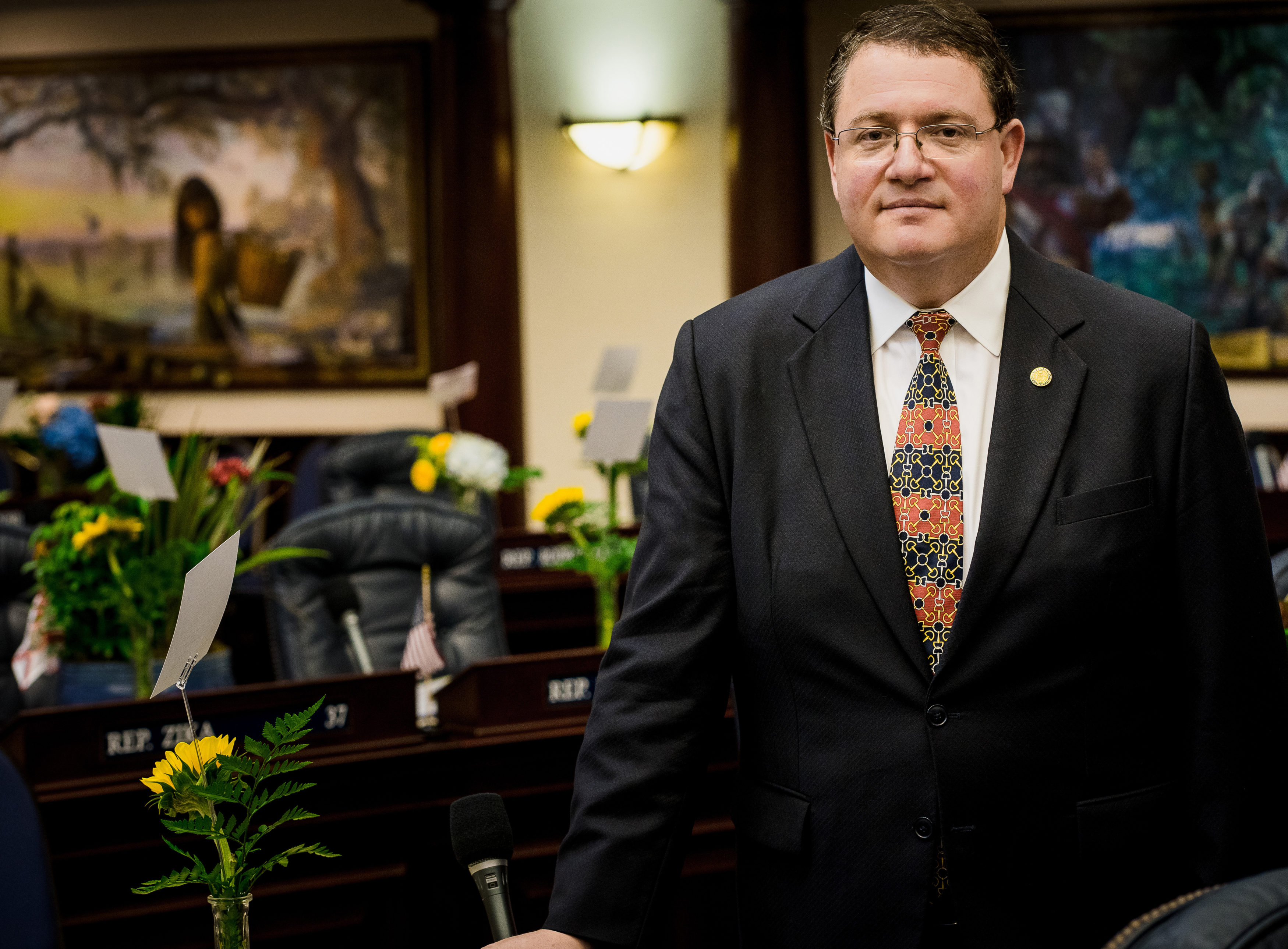
Flashing red lights could soon replace the yellow versions seen at crosswalks throughout the state.
Rep. Randy Fine believes flashing yellow lights create a false sense of security for pedestrians at crosswalks. And the ambiguous signal can have fatal consequences.
One such incident compelled the Palm Bay Republican to file a proposal (HB 1371) to phase out yellow flashing crosswalk signals in favor of red on high-speed, multilane roads. The federal government would have to approve the change.
Fine dubbed the legislation the “Sophia Nelson Pedestrian Safety Act” after a 12-year-old girl in Brevard County was hit in December when a driver didn’t stop at a flashing yellow light. Nelson’s parents joined Fine before the House State Affairs Committee, and Mark Nelson shared his daughter’s story.
“She put trust in that button when she pushed it, and she put trust in those yellow lights that traffic would stop, and she put trust in that driver that she had given the driver plenty of room to slow down and stop,” he said.
That House panel gave the measure its unanimous Thursday, sending the proposal to the House floor.
Gainesville Republican Sen. Keith Perry‘s original bill (SB 1000), which awaits one more stop in Senate Appropriations, would have removed the flashing lights altogether in favor of a standardized traffic signal. But Fine’s version has evolved through the committee process and now requires municipalities transition to red lights or remove the signals altogether.
“A flashing red light is the same as a stop sign,” Fine said. “If you see a flashing red light, you are supposed to stop. That’s what we’re taught when we go to drivers’ ed.”
Two-lane public highways, streets and roads with speed limits at 35 mph or below could retain the yellow version until October 2024.
Lawmakers offered their condolences to the Nelson family and thanked Fine for carrying the bill, but he told the panel he doesn’t deserve to be thanked. He and other representatives acknowledged that they have witnessed drivers blow past the flashing lights.
“We have more power, I think, than sometimes we ever realize,” Fine said. “I didn’t have to wait. I didn’t have to wait for somebody to die to go and fix this problem. I could have done it at any time, and I didn’t.”
Because local governments install the crossing lights where they choose, state budget experts cannot provide an exact cost estimate. Still, the price tag for the state, cities and municipalities would likely be several million dollars.
“We’ve been trying to be conscious and cognitive of the costs that are involved, but at the same time, that has to be — not even secondary — that has to be way down on the list. The primary goal of what we do up here is public safety and protecting the citizens,” Perry said.
The Senate version calls for a study to determine which type of standard signals would be the safest option. Perry doesn’t know which version will win out, but his priority is to extend pedestrian safety as far as the Legislature can.



